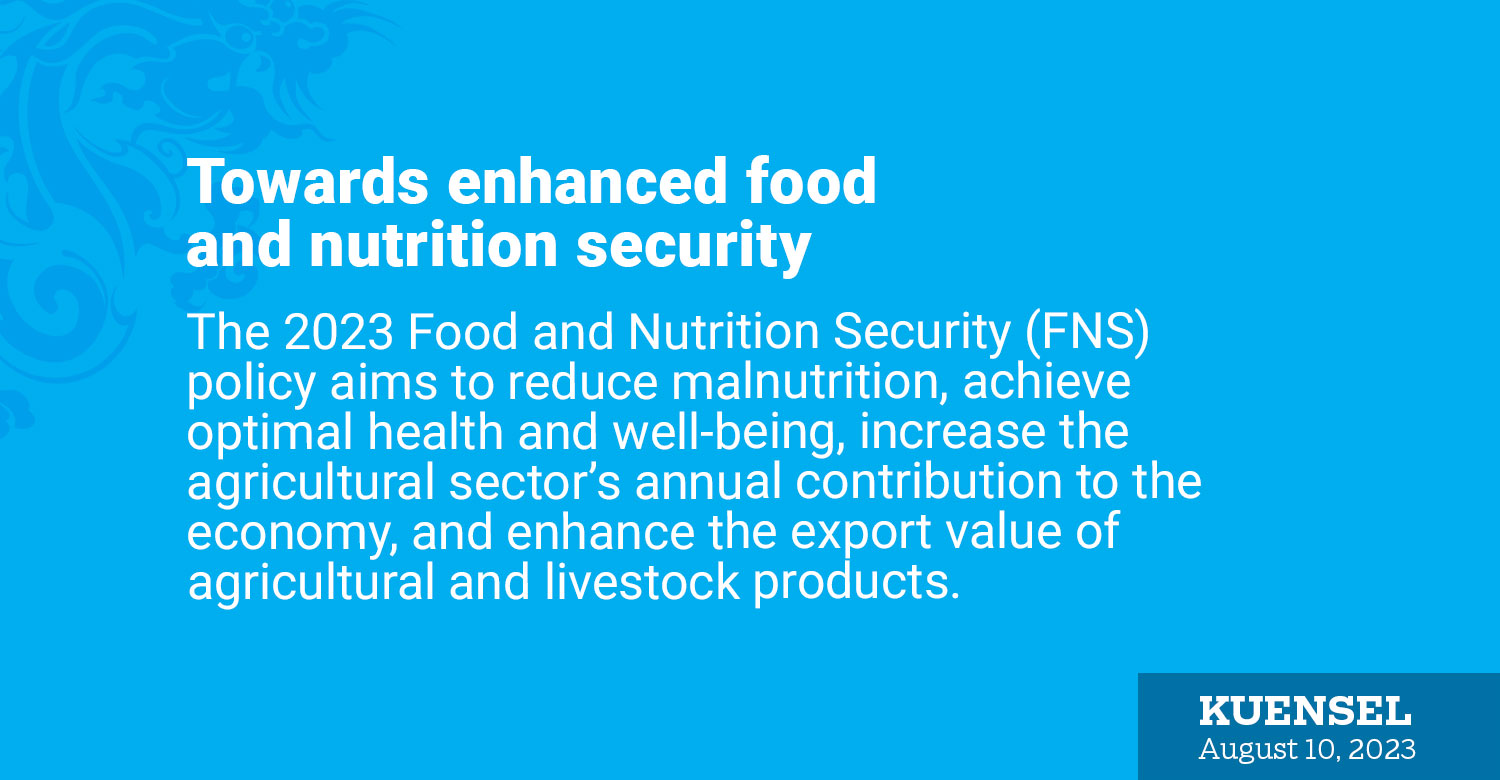Jigmi Wangdi
The 2023 Food and Nutrition Security (FNS) policy aims to reduce malnutrition, achieve optimal health and well-being, increase the agricultural sector’s annual contribution to the economy, and enhance the export value of agricultural and livestock products.
The revised policy addresses challenges related to food safety, health, and nutrition that were not included in the 2014 FNS policy. It is expected to establish a holistic and effective system to enhance the agriculture and livestock sector, ensuring it can meet the dietary needs of every Bhutanese while promoting economic and technological advancements.
According to the report, strategic policy interventions will concentrate on boosting the production of high-value agricultural and livestock products, enhancing the sufficiency of selected essential food items, and strengthening the value chain, marketing, certification, and exports.
There are 12 strategic policy interventions, each focusing on key areas of development, including safer food and nutrition consumption, gender inclusivity, research utilisation, and the integration of new innovations and technologies into agriculture and livestock practices.
The World Food Summit says that food and nutrition security exists when all individuals have consistent physical, social, and economic access to sufficient, safe, and nutritious food to fulfill their dietary requirements and preferences for an active and healthy life.
However, Bhutan still faces the triple burden of malnutrition, including underweight, overweight, and micronutrient deficiency, with 21.2 percent of children under five years of age reported as stunted.
Anemia among children aged 6 to 59 months was reported at 43.8 percent, indicating a significant public health concern among the population.
The Bhutan 2019 STEPS survey found that 86.4 percent of surveyed individuals do not consume the WHO-recommended five servings of fruits and vegetables combined, along with a high mean salt consumption of 8.3 grams per person per day. The survey also indicated that 33 percent of the population aged 15 to 69 years were overweight, and 11.4 percent were obese.
For Bhutan, the agricultural sector is projected to provide sustenance for approximately 837,288 people by 2034. Given the current per capita consumption, achieving this goal would require 289,748 Metric Tonnes (MT) of cereals, 140,160 MT of vegetables, pulses, fruits, roots and tubers, mustard, and spices, 82,202 MT of milk, 5003 MT of meat, and 198 million eggs annually by 2034.
The policy highlights the need to increase GDP contribution through high-value agricultural and livestock products such as fruits and nuts, asparagus, mushrooms, honey, rainbow trout, caviar, yak cheese, and yak fiber. This approach aims to not only boost farmers’ incomes but also to open up new export markets for agricultural and livestock goods.
Efforts will be directed towards enhancing food self-sufficiency levels for selected essential food items by incentivising farmers through cost-sharing mechanisms or direct subsidies on these commodities.
To achieve this, a multi-sectoral and multi-dimensional approach will be employed, fostering coordination and collaboration between ministries, international and local authorities, development partners, and other stakeholders.
The new policy also addresses challenges such as human-wildlife conflicts, labor shortages, and most importantly, climate-related agricultural issues.


